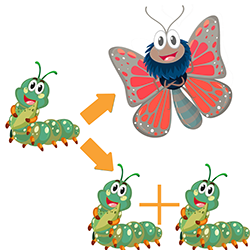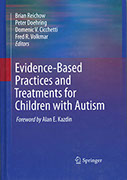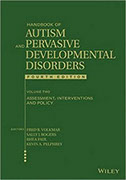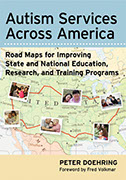Expansion vs. Innovation?
![]() Innovation & transformation involves much more than expansion & improvement
Innovation & transformation involves much more than expansion & improvement
What research guides growth?
 Not all research translates into implementation & impact when helping programs to grow.
Not all research translates into implementation & impact when helping programs to grow.
Where are the leaders?
 Know what you need in a leader, and match them care-fully to your program's goals.
Know what you need in a leader, and match them care-fully to your program's goals.
Are you ready to grow?
 Can you incorporate the new approaches, stark feedback, and partnerships needed?
Can you incorporate the new approaches, stark feedback, and partnerships needed?
Countdown to startup
![]() A timeline for the leadership, resources, and preparation needed to launch
A timeline for the leadership, resources, and preparation needed to launch
Coming Soon
Why transforming programs is so much harder than just improving or expanding them
The breadth of your ambitions helps you to choose the right leader, the right plan, and the right countdown
July 28, 2017
 If you want to help an organism to thrive, how do you start? You might begin by trying to describe different types of growth. Then you might consider whether these different types of growth vary as function of the factors in the organism and factors in the environment. This approach helps us to understand why mammals thrived on this planet and dinosaurs did not. ASD program of services and training are just other animals in our society, and we can help these to grow using the same approach.
If you want to help an organism to thrive, how do you start? You might begin by trying to describe different types of growth. Then you might consider whether these different types of growth vary as function of the factors in the organism and factors in the environment. This approach helps us to understand why mammals thrived on this planet and dinosaurs did not. ASD program of services and training are just other animals in our society, and we can help these to grow using the same approach.
We begin by distinguishing between incremental growth and true transformation in this first section. In later sections, we can consider one factor in the organism - the characteristics of the leader hired to guide a program's growth - and one factor in the environment - the characteristics of the parent organization in which the program resides. We also consider what kinds of research might guide growth. By understanding how these factors all work together, we can help funders to match outcomes to expectations, whether they hope to spur expansion or innovation. And we can outline a timeline for growth, to help programs and funders evaluate the progress being made. Understanding the role of leaders and programs in guiding each type of growth also sheds light on why true innovation and transformation are so much harder to achieve; it depends on the right fit between the program's goals, the program's leader, and the appetite of the parent organization.
Related Content
On this site
Examples of Growth
![]() An ASD Teacher Training Program
An ASD Teacher Training Program
![]() A Hospital-Based ASD Clinic
A Hospital-Based ASD Clinic
![]() A University-Based ASD Transition Program
A University-Based ASD Transition Program
The different ways that programs can grow
Throughout this site, I have tried to show how we can close the implementation gap between what ASD research shows is is possible, and what we actually help people with ASD achieve. One problem is that many people do not understand that programs of ASD services and training can grow in different ways, and that different types of growth help to close different types of gaps. A specific problem discussed separately is the failure to recognize that only a small proportion of research is directly relevant to efforts to improve ASD services and training.
Incremental Growth
One type of growth involves progressive, systematic changes to existing programs, what I will call incremental growth. This kind of growth is more gradual: it does not involve dramatic changes to the structure and funding of program, or major breakthroughs in treatment and training, but it nonetheless helps to close implementation gaps. For example, a program can grow through:
- Expansion: A program adds new staff or affiliated satellites, to be able to offer more of the same kinds of services or training. Efforts at expansion can draw from several important lessons described in detail elsewhere: (a) Use large, well-designed surveys to identify critical gaps in access to basic care, and to set benchmarks for new programs; (b) Consider broadening eligibility requirements, since many practices and programs for ASD are effective for those only with ID, and; (c) Ensure a sustainable pipeline of participants by carefully matching programs to the unmet needs identified in the region (Doehring, 2013).
- Improvement: A program can add a new type of service or training that programs elsewhere have identified as effective and have demonstrated how to deliver. Efforts at improvement can draw other important lessons: Build professional development around core principles that translate research into practice guidelines with clear outcomes (Doehring, 2011).
- Replication: A successful program model developed elsewhere is imported in its entirety, of a program developed on site is replicated in its entirety to another site. Efforts at expansion can draw on an important lesson: To replicate a practice or program, consider the infrastructure of funding, staffing, populations, curriculum, and setting.
This kind of growth does not sound difficult, but it often is. Some of the barriers to even this more modest expansion are outlined in a later section. For example, programs must establish that there is a need, they must identify a source for funding any increased costs, they must undertake the training or bring in consultants to acquire new expertise, they must hire new staff to achieve the necessary capacity, and so on. Most would do well to heed an important lesson: Many people promoting new practices focus on programs of training, ignoring other needed changes in policy and services
And this kind of growth is absolutely critical to our capacity to address the growing needs of people with ASD across the country. Almost all of the improvements to services, and many of the improvements to training, must occur at the local and regional level because of the frequent need for some form of face-to-face interaction between the programs that actually deliver the supports needed to their clients (Doehring, 2013). Almost all of the implementation gaps will be closed incrementally - sector by sector, population by population, program by program, and region by region, And as services and training becomes more intense, or draws on a greater number of clients, developing this local capacity for growth becomes even more cost effective.
The good news is that available research can guide us. For example, outcome research can help identify approaches we can capitalize on right now (Reichow, Doehring, Cicchetti, and Volkmar 2011). Consider the use of proactive, functional approaches already known to be very effective in decreasing problem behavior like aggression and self-injury (Doehring et al, 2014). We know that these behaviors result in hospitalizations, residential placement, and police contact at alarming rates. Even basic elements of care break down rapidly to result in behavioral crisis when services, training, research, and policy are not coordinated (Doehring, 2014). The intensity of services required, and the type of training at least some types of providers need, means that local and regional capacity must be developed. There is a pressing need, and invaluable opportunity, for growth in local and regional programs of ASD services and training designed to provide behavior support. Our ASD Hospital Clinic described later achieves this through improved coordination of different medical specialists, or through its transformation into a hub in an integrated network of regional behavioral health providers.
Research on access to services also helps us to anticipate important gaps that can guide incremental growth. For example, traditionally underserved populations face many barriers, like accessing many diagnostic and treatment services, and so we might begin by considering changes to address these gaps. Our ASD Hospital Clinic described later achieves this through improved coordination with community-based case managers who can address the transportation barriers often faced by these families.
The bad news is that much of this important work is unheralded. How often do you see a local public school or provider of behavioral health services featured in the press for adding new expertise or capacity? How many articles in academic journals document how a local provider of services or training added new expertise or capacity? Can there be any financial incentive when profit margins are so thin and public sector funding are already so stretched? How likely are the recipients of services and training to thank providers for increasing capacity or expertise? Instead, we rely solely on the drive of individual providers of services and training to be better. This dedication helps providers to address the many challenges that confront them in a typical day of work, but may be insufficient to address the additional risk and long-term commitment required to undertake program expansion and improvement.
Transformation
More significant change take several forms. Whereas expansion and improvement primarily entail a change in one or two elements (methods, staffing, funding, expertise, settings, and so on), transformation and innovation involve changing multiple elements simultaneously. At least three types can be highlighted. These distinction are not exhaustive, and are best viewed as capturing various points on a multidimensional continuum of program change.
- Innovation: True innovation - the development of an entirely new program of service or training with some demonstration of its effectiveness - is relatively rare. In most cases, innovation will involve novel combinations of elements: methods, content/targets, populations, infrastructure, and so on). Not every promised development in in ASD services and training constitute innovation: some propose to address only one element (like a new treatment method), and others may lack a credible plan for implementation or for establishing effectiveness. The challenges of growing innovating services offers an important lesson: Service innovation depends on available expertise, funding, and staff, and so slows the growth of services for emerging needs.
- Transformation: The new model or type of service or training fundamentally changes how other kinds of services and training already provided by the organization will be delivered in the future. in an cases, this transformation occurs through multiple, simultaneous changes in the core mission. This could include reaching a different population, relying on the collective impact generated via partnerships with other agencies or other disciplines, and/or substituting one model of delivery for another (Doehring, 2016a).
- Incubation: Capacity is increased by adding new sites that can implement a new program model, and that themselves are largely capable of independently of maintaining themselves and them expanding or replicating themselves (Doehring, 2016b). For example, new sites can hire and train their own staff and evaluate their own progress, and then can provide the bulk of support needed to launch and support a new site. Efforts to create new sites can draw on an important lesson: Creating right-sized satellite sites increases overall capacity, improves access, and sets the stage for program replication. Some programs claim to be incubators when they really only offer training or support in replicating programs offered elsewhere: they do not create programs independently capable of expansion or replication.
Many new programs of ASD services claim to be transformative or innovative, but few actually are. That should be no surprise. Most programs underestimate the complexity of program development, and so struggle just to grow incrementally in the manner described above; transformation is even more daunting. Programs seeking to transform can draw on an important lesson; Launching a complex program in phases helps to maintain focus on specific goals, and to document progress for funders. Until we demonstrate how to reliably achieve incremental improvements to programs of ASD services and training, we cannot expect everyone to achieve true innovation. We need to learn to walk before we can run.
That most new programs of ASD services are not especially innovative should also not be worrying. As described above, not every new program needs to be innovative to close implementation gaps. Other types of growth can help us to more easily, incrementally, and gradually close implementation gaps, and increase our capacity to achieve better outcomes right now.
So why do so many new proposals promise breakthroughs, and so many new programs claim to be innovative? Maybe proponents do not know how to accurately characterize the growth they strive for, or do not recognize the value of incrementally closing local implementation gaps. It also seems likely that, in the competition for recognition and funding, proponents of new programs feel obliged to make their own proposal stand out with attention-getting superlatives that border on hyperbole. In most cases, these claims are not only misleading, they are insufficient and perhaps unnecessary. Researchers unfamiliar or inexperienced in community-based programming appear to be especially vulnerable to such over-reach. But in the increasingly crowded field of ASD services and training, these kinds of claims will be increasingly likely. As a result, even more proposals for new programs of services and training will fall short of their ambitions, or even fail to launch at all. And funders will have to be even more vigilant in evaluating proposals.
Of course, we should continue to strive for breakthroughs and celebrate innovation in ASD services and training, when these really do occur. But while we have invested hundreds of millions of dollars in search of such breakthroughs over the past two decades, we have missed much easier opportunities to incrementally improve the lives of everyone with ASD. Nowhere is this more evident than the problems that traditionally underserved groups face in accessing basic ASD services. We have known how to accurately diagnose ASD for 20 years, but these groups continue to be diagnosed late or inaccurately, if they are diagnosed at all. These gaps persist throughout their lifetimes, in access to every aspect of education and treatment.
 Where's the beef? Programs with fancy titles may just be rebranding existing services or training.
Where's the beef? Programs with fancy titles may just be rebranding existing services or training.
Experienced professionals have all lived through some form of re-branding within their organization, when an established program or process is renamed. Sometimes the change is meaningful and the impact is substantial: other times, it is little more than lipstick on a pig. Programs are not cut, they are "right-sized" or "re-invigorated". The worst examples are truly Orwellian, masking a longstanding lack of commitment to better services or training.
Consider the example of programs touting neurodiversity initiatives. These are ostensibly inspired by Steve Silberman's book of the same name that reframes ASD as (at least in some cases) a natural form of human variation rather than an illness to be cured. For example, every good organization should already have mechanisms
- To respond to students or employees who have different strengths. For example, the natural cycle of a company's periodic performance reviews of employees should function to better align the unique talent of an employee with the opportunities available to them in the company.
- To respond when performance suffers because of these differences. For example, every good university already has support services that should help struggling students build on their strengths.
- For students or employees to provide feedback to management, and for management to respond to these.
The upshot? Good organizations should already have begun to respond to the diverse strengths and needs their employees or students on the spectrum bring. Some organizations that have chronically failed to respond to the diverse strengths and needs of people to the spectrum will re-brand their belated attempts to catch up as "neurodiversity". They then brashly advertise their efforts as progressive, to try to set themselves apart from other organizations that have been quietly doing the right thing for years.
An ASD Teacher Training Program
![]() How do you build on an ASD certificate for teachers? Examples of incremental growth (like adding or improving courses) are contrasted with examples of transformation (like integrating community training as part of a state plan).
How do you build on an ASD certificate for teachers? Examples of incremental growth (like adding or improving courses) are contrasted with examples of transformation (like integrating community training as part of a state plan).
A Hospital-Based ASD Clinic
![]() How do you build on an ASD clinic that offers diagnosis & follow-up? Examples of incremental growth (like coordinating with other clinics) are contrasted with trans-formation (like creating tiered systems of care with other providers).
How do you build on an ASD clinic that offers diagnosis & follow-up? Examples of incremental growth (like coordinating with other clinics) are contrasted with trans-formation (like creating tiered systems of care with other providers).
A University-Based ASD Transition Program
![]() How do you build on existing services for students & employees? Examples of incremental growth (like expanding accommodations) are contrasted with true transformation (like a coordinated program for low-income youth).
How do you build on existing services for students & employees? Examples of incremental growth (like expanding accommodations) are contrasted with true transformation (like a coordinated program for low-income youth).
Expansion vs. Innovation?
![]() Innovation & transformation involves much more than expansion & improvement
Innovation & transformation involves much more than expansion & improvement
What research guides growth?
 Not all research translates into implementation & impact when helping programs to grow.
Not all research translates into implementation & impact when helping programs to grow.
Where are the leaders?
 Know what you need in a leader, and match them care-fully to your program's goals.
Know what you need in a leader, and match them care-fully to your program's goals.
Are you ready to grow?
 Can you incorporate the new approaches, stark feedback, and partnerships needed?
Can you incorporate the new approaches, stark feedback, and partnerships needed?
Countdown to startup
![]() A timeline for the leadership, resources, and preparation needed to launch
A timeline for the leadership, resources, and preparation needed to launch
Coming Soon
X
My Presentations and Publications
![]() (2016) Innovative approaches to developing a multi-agency, college-based ASD transition program. Ohio Center for Autism and Low Incidence Conference, Columbus, OH.
(2016) Innovative approaches to developing a multi-agency, college-based ASD transition program. Ohio Center for Autism and Low Incidence Conference, Columbus, OH.
 (2016b). Incubating programs of services and training for people with developmental disabilities: A new partnership for UCEDDs, community-based providers, and philanthropists. Association of University Centers on Disability, Washington, DC.
(2016b). Incubating programs of services and training for people with developmental disabilities: A new partnership for UCEDDs, community-based providers, and philanthropists. Association of University Centers on Disability, Washington, DC.
 (2011). With Brian Reichow, Dominic Cicchetti, & Fred Volkmar F. (Eds.). Evidence-Based Practices and Treatments for Children with Autism. Springer-Verlaug, New York, NY.
(2011). With Brian Reichow, Dominic Cicchetti, & Fred Volkmar F. (Eds.). Evidence-Based Practices and Treatments for Children with Autism. Springer-Verlaug, New York, NY.
Guideposts
![]() Straight Lines Barriers to accessing services are well-established: include under-served groups from the start when testing a new service
Straight Lines Barriers to accessing services are well-established: include under-served groups from the start when testing a new service
![]() Straight Lines Use large, well-designed surveys to identify critical gaps in access to basic care, and to set benchmarks for new programs
Straight Lines Use large, well-designed surveys to identify critical gaps in access to basic care, and to set benchmarks for new programs
 (2011). Evidence-Based Practice: From Homes and Schools to a Regional Service Delivery Model. Autism New Jersey. Atlantic City, NJ.
(2011). Evidence-Based Practice: From Homes and Schools to a Regional Service Delivery Model. Autism New Jersey. Atlantic City, NJ.
![]() Straight Lines To replicate a practice or program, consider the infrastructure of funding, staffing, populations, curriculum, and settings
Straight Lines To replicate a practice or program, consider the infrastructure of funding, staffing, populations, curriculum, and settings
![]() Straight Lines Build professional development around core principles that translate research into practice guidelines with clear outcomes
Straight Lines Build professional development around core principles that translate research into practice guidelines with clear outcomes
![]() Simple Steps Creating right-sized satellite sites increases overall capacity, improves access, and sets the stage for program replication.
Simple Steps Creating right-sized satellite sites increases overall capacity, improves access, and sets the stage for program replication.
![]() Simple Steps Ensure a sustainable pipeline of participants by carefully matching programs to the unmet needs identified in the region
Simple Steps Ensure a sustainable pipeline of participants by carefully matching programs to the unmet needs identified in the region
![]() Simple Steps Launching a complex program in phases helps to maintain focus on specific goals, and to document progress for funders.
Simple Steps Launching a complex program in phases helps to maintain focus on specific goals, and to document progress for funders.
![]() Simple Steps Service innovation depends on available expertise, funding, and staff, and this slows the growth of services for emerging needs.
Simple Steps Service innovation depends on available expertise, funding, and staff, and this slows the growth of services for emerging needs.
![]() Simple Steps Consider broadening eligibility requirements, since many practices and programs for ASD are effective for those only with ID
Simple Steps Consider broadening eligibility requirements, since many practices and programs for ASD are effective for those only with ID
![]() Other Lessons With long-term planning and support, a university can incubate new programs of services and training for the community
Other Lessons With long-term planning and support, a university can incubate new programs of services and training for the community
![]() Other Lessons Improving and expanding services in a coordinated and sustainable way requires planning, expertise, and leadership
Other Lessons Improving and expanding services in a coordinated and sustainable way requires planning, expertise, and leadership
![]() Other Lessons Many people promoting new practices focus on programs of training, ignoring other needed changes in policy and services.
Other Lessons Many people promoting new practices focus on programs of training, ignoring other needed changes in policy and services.

